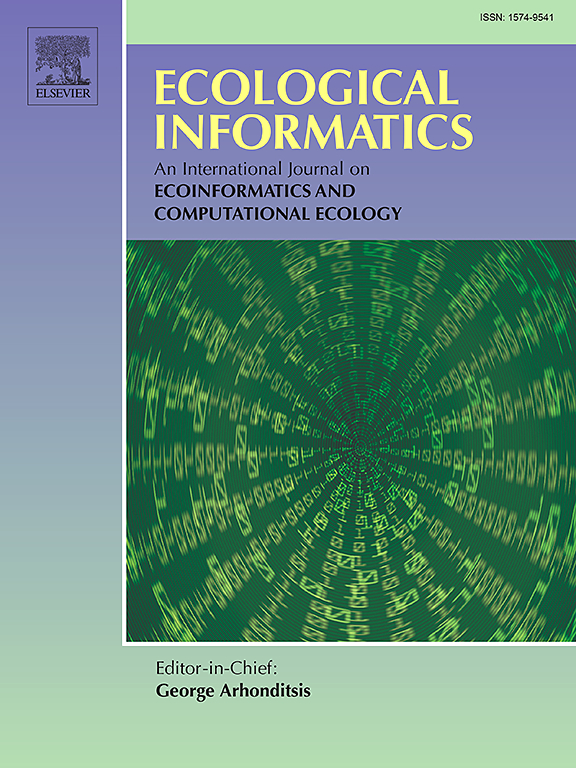用于低成本鸟鸣检测系统的灵活混合边缘计算物联网架构
IF 7.3
2区 环境科学与生态学
Q1 ECOLOGY
引用次数: 0
摘要
对鸟类种群的监测为了解生物多样性变化及其与环境变化的相关性提供了有价值的见解。本研究提出了一种灵活的混合边缘计算物联网架构,用于低成本的鸟鸣检测系统。该系统集成了低功耗微型计算机,如树莓派,配备USB麦克风,LoRa模块和Wi-Fi,在农村和城市环境中无缝运行。通过利用深度学习技术,包括卷积神经网络(cnn)对鸟类鸣叫数据集进行训练,该系统可以在边缘进行实时物种检测,从而最大限度地减少对高带宽传输的需求。节点根据可用性动态选择通信技术,将数据发送到物联网分析平台。现场部署证明了该系统对生物多样性监测的效率、互操作性和适应性,特别是在连接有限的偏远地区。这种架构解决了实时物种检测的挑战,同时确保了低成本、可扩展性和能源效率。主要优点是设备可以在没有移动覆盖的地区运行,因为它们只传输检测信号。这可以显著节省带宽,因为处理是在边缘进行的。本文章由计算机程序翻译,如有差异,请以英文原文为准。

Flexible hybrid edge computing IoT architecture for low-cost bird songs detection system
The monitoring of bird populations provides valuable insights into biodiversity variations and their correlation with environmental changes. This study proposes a flexible hybrid edge computing IoT architecture for a low-cost bird song detection system. The system integrates low-power microcomputers, such as Raspberry Pi, equipped with USB microphones, LoRa modules, and Wi-Fi for seamless operation across rural and urban environments. By utilizing deep learning techniques, including convolutional neural networks (CNNs) trained on bird song datasets, the system performs real-time species detection at the edge, minimizing the need for high-bandwidth transmission. Nodes dynamically select communication technologies based on availability, sending data to an IoT analytics platform. Field deployments demonstrate the system's efficiency, interoperability, and adaptability for biodiversity monitoring, particularly in remote areas with limited connectivity. This architecture addresses the challenges of real-time species detection while ensuring low cost, scalability, and energy efficiency. The main advantage is that devices can operate in areas without mobile coverage, as they only transmit the detection signal. This results in significant bandwidth savings, since the processing is carried out at the edge.
求助全文
通过发布文献求助,成功后即可免费获取论文全文。
去求助
来源期刊

Ecological Informatics
环境科学-生态学
CiteScore
8.30
自引率
11.80%
发文量
346
审稿时长
46 days
期刊介绍:
The journal Ecological Informatics is devoted to the publication of high quality, peer-reviewed articles on all aspects of computational ecology, data science and biogeography. The scope of the journal takes into account the data-intensive nature of ecology, the growing capacity of information technology to access, harness and leverage complex data as well as the critical need for informing sustainable management in view of global environmental and climate change.
The nature of the journal is interdisciplinary at the crossover between ecology and informatics. It focuses on novel concepts and techniques for image- and genome-based monitoring and interpretation, sensor- and multimedia-based data acquisition, internet-based data archiving and sharing, data assimilation, modelling and prediction of ecological data.
 求助内容:
求助内容: 应助结果提醒方式:
应助结果提醒方式:


